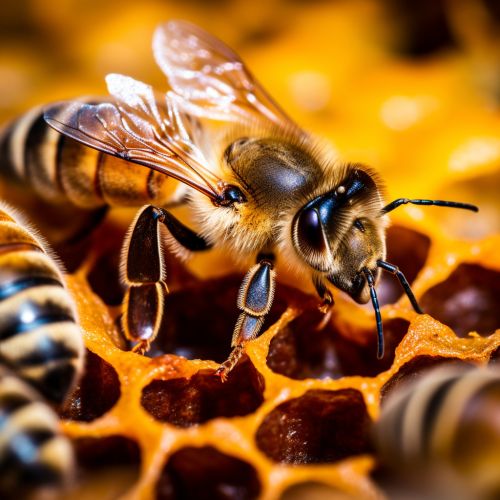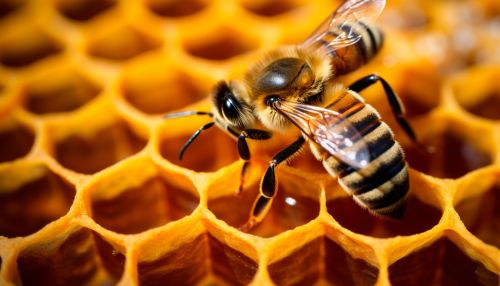Queen pheromones
Introduction
Queen pheromones are chemical substances secreted by queen bees and other eusocial insects to communicate with and control the behavior of their colonies. These pheromones play a crucial role in maintaining the social structure and functioning of the colony, influencing behaviors such as mating, reproduction, and worker task allocation.


Chemical Composition of Queen Pheromones
The chemical composition of queen pheromones varies among different species of eusocial insects. In honey bees (Apis mellifera), the primary component of the queen pheromone is 9-oxodec-2-enoic acid (9-ODA). Other components include hydroxydec-2-enoic acid (HDA), methyl p-hydroxybenzoate (HOB), and 9-hydroxydec-2-enoic acid (9-HDA). In ants, the queen pheromone often consists of cuticular hydrocarbons, while in termites, the queen pheromone is typically a blend of terpenoids.
Functions of Queen Pheromones
Mating and Reproduction
Queen pheromones play a critical role in mating and reproduction in eusocial insects. In honey bees, the queen's pheromone attracts drones for mating during the nuptial flight. After mating, the queen continues to release her pheromone to suppress the reproductive development of worker bees, ensuring her status as the sole reproductive female in the colony.
Worker Task Allocation
Queen pheromones also influence the division of labor among worker bees. Exposure to the queen's pheromone can stimulate workers to perform tasks such as foraging, brood care, and nest maintenance. In the absence of the queen's pheromone, workers may become disoriented and cease performing their duties, leading to the collapse of the colony.
Pheromone Communication in Eusocial Insects
Pheromone communication is a fundamental aspect of eusociality, the highest level of organization in animal societies. Queen pheromones, in particular, are essential for maintaining the social structure and functioning of eusocial insect colonies. By releasing her pheromone, the queen can control the behavior of her workers, ensuring the survival and success of the colony.
Conclusion
Queen pheromones are a fascinating aspect of eusocial insect biology, playing a crucial role in mating, reproduction, and worker task allocation. Through the release of these chemical signals, the queen maintains her dominance within the colony and ensures its survival and success. As such, understanding the nature and functions of queen pheromones can provide valuable insights into the complex social dynamics of eusocial insects.
